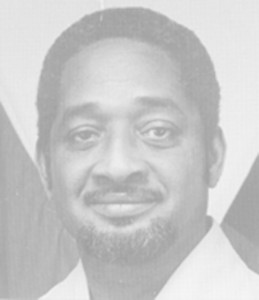Machinations towards Guyana’s Independence, May 1966
By Clem Seecharan
Professor of Caribbean History and Head of Caribbean Studies, London Metropolitan University (forthcoming in Round Table October 2008)
Guyana (formerly British Guiana), the only British colony on the mainland of South America, became independent at midnight on 26 May 1966. But whose freedom was it? For nearly 20 years the Marxist leader of the People’s Progressive Party (PPP), Cheddi Jagan (1918-97), of Indian extraction, buoyed by the independence of India and obsessed with the dominance of the British company, Booker, in the colony’s plantation economy, had championed Guyana’s ‘struggle’ for independence. Yet, on the big night it was the African leader of the People’s National Congress (PNC), L.F.S. Burnham (1923-85), who was the recipient of the prize. His politics, though left-wing, was characterised by a cultivated pragmatism, strategic ambiguity ─ the facility to ‘tack and turn as advantage seems to dictate…his whole political approach is opportunistic’, as a British politician had assessed him in 1954.i With the aid of the Portuguese and Coloured (mixed race) political party, the United Force (UF), led by a Portuguese businessman, Peter D’Aguiar, a rabid anti-communist, in conjunction with the decisive intervention of President Kennedy himself and the CIA, in 1962-3, the PNC resorted to violence to make British Guiana ungovernable. The latter proved effective: it delayed independence, while Anglo-American collusion brought a Burnham-D’Aguiar coalition to power in December 1964 and independence in May 1966. Cheddi Jagan was a virtual spectator to the celebrations of the country’s ‘freedom’.
Speaking in the National Assembly on Independence Day, Jagan made it clear that this was not his freedom
Former President LFS Burnham
day. That had to be struggled for: foreign control of the economy had to be eliminated; only his party, the PPP, could achieve real liberation for the country. He meant disengagement from ‘imperialism’ and the capitalist system ─ the building of the communist utopia, following the path of the glorious Soviet Union. It was not an auspicious beginning for this troubled land:
[P]olitical independence has been attained under the continuation and consolidation of foreign economic control and the maintenance of the colonial type economy, based on primary production and extraction. This has already detracted from the living standards of the working people…The PPP, the vanguard of Guyana’s struggle for national liberation, is convinced that liberty is achieved only when it has been struggled for and won. It cannot be a gift of charity. For the people of Guyana, real freedom is still a prize to be won, and win it we will ─ as a reunited free people. i
Jagan and Burnham, founder-members of the PPP in 1950, had won the first general elections under universal adult suffrage in April 1953. But after 133 days the British suspended the constitution and evicted the People’s Progressive Party (PPP) government from office, convinced that Jagan was a pro-Moscow communist bent on subverting liberal democracy.iii His politics was anathema to the Fabian socialism of the British West Indies. The tenuous coalition, suggestive of African-Indian unity in the PPP, did not survive the report of the Robertson Commission sent by the Colonial Office to British Guiana in early 1954, following the suspension of the constitution. It sought to make a distinction between the ‘communism’ of Cheddi Jagan and the moderate ‘socialism’ of Forbes Burnham. But this was not merely a ‘divide and rule’ tactic; it was an astute exploitation of the seeds of ethnic division, immanent in the society, and marked by a tendency towards Indian triumphalism and African apprehension, since the freedom of ‘Mother India’ in 1947. They argued: ‘Mr Burnham (chairman of the Party) was generally recognised as the leader of the socialists in the PPP and as such to be in rivalry with Dr Jagan for the moral leadership of the Party as a whole…[T]here were many who thought that as
Continue Reading on Stabroek News
This preview shows approximately 15% of the article. Read the full story on the publisher's website to support quality journalism.
